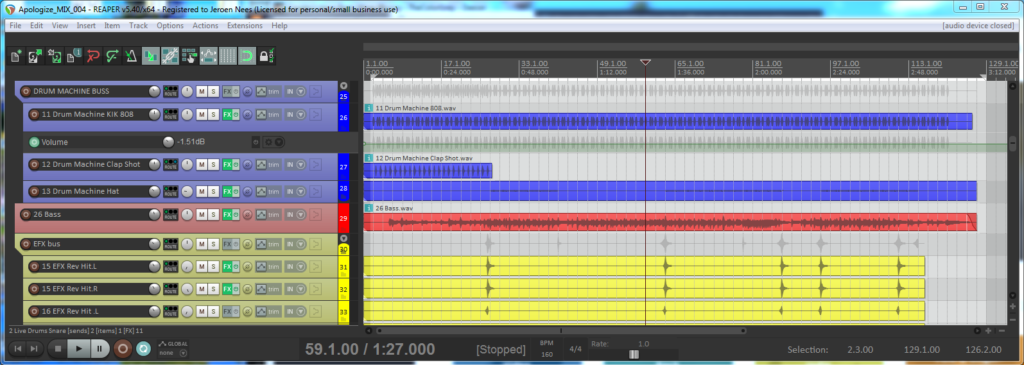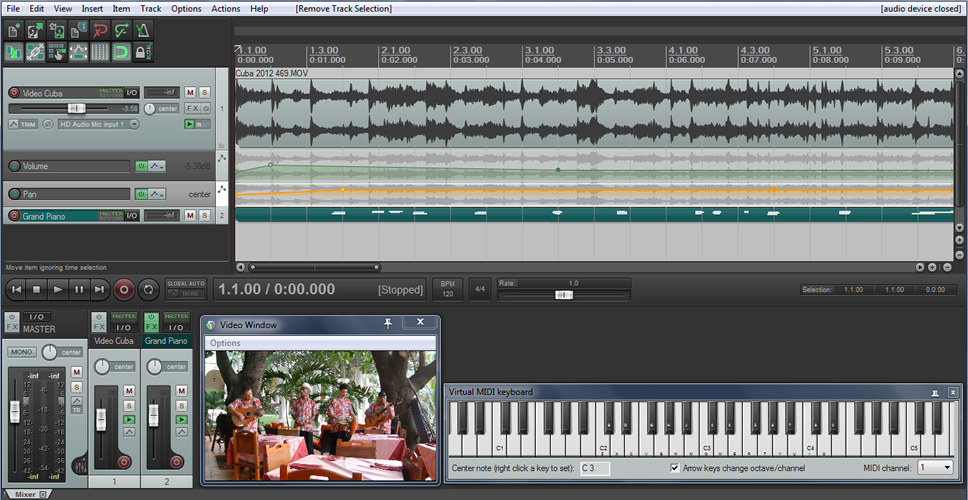


#Reaper lyrics editor update
When you’re done, hit Save (near the bottom right of the window) and your toolbar will update in Reaper.

Click on one to select it, close the window and it should update in your preview. Click OK, and your edits will be reflected in the toolbar preview window.Īlternatively, right-click on the Action in the left column, and select ‘change icon’ to bring up a window containing the available graphical icons. You can also elect to make your button double-width, which creates space for a slightly more meaningful label. A dialogue box will pop up with a text field you can edit. You can edit the label by right-clicking on the Action in the left column and selecting ‘Text Icon.’. Reaper’s default context menu.īy default, your new button will be a small square with a text label that’s automatically generated from the name of the Action, but don’t be put off, as you can change this in a few ways. You should see the new Action on the left, and a new button in your toolbar preview. Find and select the Action, then press ‘Select/close’. In this instance let’s use ‘Insert new subproject.’. Click the Add button, and select the Action you’d like assigned. You’ll also see a preview of the toolbar’s appearance at the bottom of the window. Both columns should now show the contents of the default toolbar. From the dropdown on the top left, select ‘Main toolbar’. Toolbar editing takes place in the same window and is achieved in much the same way, so let’s add a button to the main toolbar. (You can toggle this item on and off using a tick box in the ‘Customise menus/toolbars’ window.) As well as Actions, you can also add labels, separators, and submenus to keep your menus organised. This contains the entire non-modified version of the menu, so you can always access the standard layout if necessary. You may also notice at the very bottom of the menu you can now see a new item named ‘Default Menu: Main File’. The author’s custom toolbar, with the Customise window sitting below. Your new command should now exist in the File menu. Once you’re done, close and save when prompted. That Action should now be added to the list on the left-hand side, and you can click and drag it up and down the list to the desired position. Find and select ‘Xenakios/SWS: Save item as audio file.’ then click on ‘Select/close’. This brings up a searchable list of Actions (including any you’ve created yourself). First click on the Add button (bottom left of the ‘Customise menus/toolbars’ window) and select Action from the drop-down. Say, for instance, we want to add the ‘Save item as audio file’ command to the File menu. Now let’s make a very simple edit to demonstrate the functionality. The right column always shows the default configuration, and the left displays your customised version as we’ve made no changes yet, both columns should appear identical. Select ‘Main File’, which should be at the top of the list, and you’ll be presented with two columns of commands. We’ll start with the File menu from Reaper’s primary menu bar. The drop-down selector, found top-left, allows you to choose which elements you’ll customise. To get started, from the main window, go to the Options menu, then select ‘Customise menus/toolbars.’ to bring up the appropriate window. Menu ModsĪll Reaper’s drop-down menus, context menus, and toobars link back to Action items. They lie beneath many default controls, including toolbar buttons, dropdown and contextual menus, and even fundamental commands like loading and saving projects. The Actions list comprises several thousand commands, each of which can be assigned to various different input triggers. Actions already lie at the heart of your own interaction with Reaper - for example, when you hit the space bar to start and stop playback of your timeline, you’re triggering an Action named ‘Transport: Play/stop’. In case you missed the March workshop, I’ll briefly recap what Actions are all about.
#Reaper lyrics editor free
This is what we’ll be exploring this month and, as in the earlier article, you’ll need the free SWS/S&M extension ( if you wish to follow all the examples. This feature allows you to tweak Reaper’s user interface subtly so that it better suits your existing workflow, but it can also radically alter Reaper’s layout and functionality. What you don’t like about Reaper, you can probably change!īack in SOS March 2016 ( ), we created some custom Reaper Actions and assigned keyboard shortcuts to them, but Actions can also be assigned to menus and toolbars. CubicPack: using the theming engine in conjunction with custom toolbars to bring the Reaper user interface much closer to that of the ‘target’ DAW, Cubase.


 0 kommentar(er)
0 kommentar(er)
